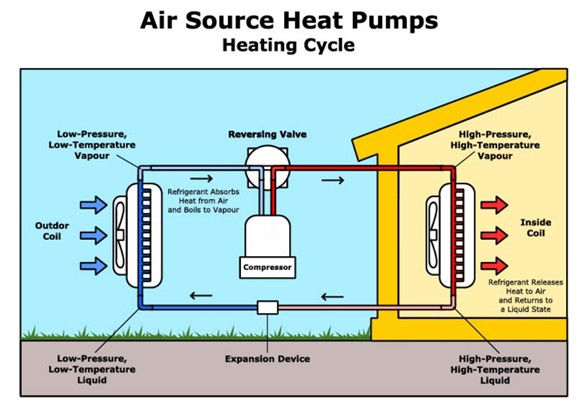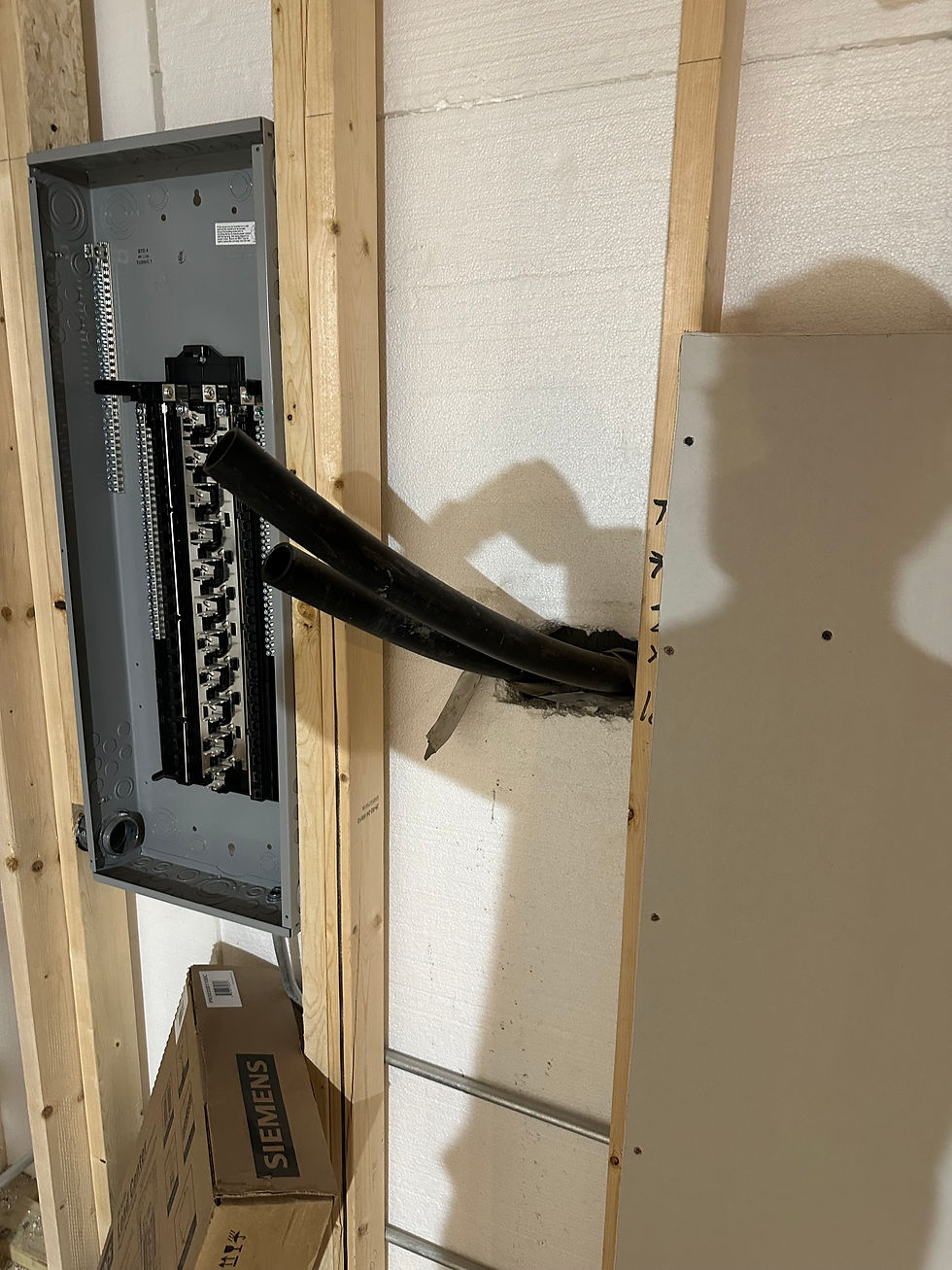Which Heat Pump Is Best?
- paulmaddrell
- Jun 14
- 4 min read
Introduction
As I design my new energy-efficient home in Oak Park, Illinois, I need to select the appropriate heat pump system. Two primary options are Air Source Heat Pumps (ASHP) and Geothermal or Ground Source Heat Pumps (GSHP). Both systems utilize electricity to move heat rather than generating it through combustion. The result is cleaner and more efficient heating and cooling.
How Do Heat Pumps Work?
Air Source Heat Pumps (ASHP):In the winter, ASHPs moves heat from the outside air and transfer it indoors. In warmer months, the process reverses and the ASHP moves indoor heat and releases it to the outside air. Modern ASHPs are designed to operate efficiently even in colder climates, though their performance diminishes during extreme cold spells.

Ground Source Heat Pumps (GSHP):GSHPs leverage the constant temperatures underground (approximately 50 degrees Fahrenheit) to provide heating and cooling. They circulate a fluid through a loop buried in the ground. They absorb heat from the ground during winter and release heat to the ground during summer.

Performance in Illinois Weather
Oak Park experiences cold winters and hot, humid summers. The average low temperature in January and February in Chicago is about 18 degrees, but in 1963 there were 31 days in which the temperature was below zero. The average high in July and August is 83 degrees, although summers have been much hotter in recent years.
ASHPs can manage these conditions, but their efficiency decreases during subzero temperatures, there just isn’t enough “heat to pump”. As such, many northern homes that have ASHPs also have a supplementary heating source. In my current home, I have a small Bosch gas furnace which activates on very cold days. GSHPs benefit from the stable underground temperatures (colder than the air in the summer and warmer than the air in the winter), maintain consistent performance regardless of outdoor weather fluctuations.
What are the Pros and Cons of the Two Types of Heat Pumps?
ASHPs are easier and quicker to install. They are less costly. They can be installed on any property. As noted above, they can be less efficient in extreme temperature. They are located outdoors and are exposed to weather conditions which could increase maintenance costs and decrease their life span.
The big disadvantage for GSHPs is much higher installation costs. They have some site limitations, especially horizontal systems that require large lot sizes (difficult in urban environments).GSHPs on the other hand have consistent performance and efficiency throughout the year, their components are either indoors or below the ground which increases their life span.
Cost and Incentives
ASHP installation costs range from $5,000 to $12,000. There is (at least when this was written) a $2,000 federal tax credit and additional rebates from local utilities. GSHP installation costs typically range from $20,000 to $40,000. There is (at least when this was written) a 30% federal tax credit is available, significantly offsetting the initial investment.
Environmental Impact
Both ASHPs and GSHPs offer environmentally friendly alternatives to traditional heating systems by reducing greenhouse gas emissions. GSHPs have a lower carbon footprint due to their higher efficiency and reliance on stable underground temperatures.
Lifespan and Maintenance
ASHPs have a lifespan of about 15 years. Regular maintenance, such as cleaning filters and checking refrigerant levels, is required. GSHP’s indoor components can last between 20 to 25 years, while the underground loop system can last 50 years or more. Maintenance requirements are minimal.
My Takeaway
For homeowners prioritizing long-term savings, environmental sustainability, and low maintenance, GSHPs present an excellent option. However, if initial costs are a significant consideration, ASHPs still offer substantial benefits and improved efficiency over traditional systems.
My objectives are clear. I am looking for long-term savings and low maintenance costs. In addition, I am willing to pay more upfront and accept a longer payback period to obtain these benefits. As such, I have chosen a ground source heat pump. Your objectives, home setting, and economic situation my be different which might lead you to purchase an air sourced heat pump. There is no “one answer fits everyone.”
What Does My System Look Like?
In most deep vertical GSHP systems, one or two holes are dug 300+ feet into the ground. Below 10 feet, the earth’s temperature is 50 degrees. Huge drilling rigs are required. In many urban settings it is difficult, if not impossible, for these rigs to access small lots or congested neighborhoods. In addition, deep vertical drilling can be costly.
In my case, I have decided to work with a company, EarthPower LLC, that focuses on urban vertical GSHPs in a unique manner. Instead of one or two holes (300 feet in depth), they dig 9 holes of 60 feet of depth each (540 feet of total depth). Therefore, the total length of tubing is roughly the same. The cost is less, and the logistics are simpler. The drilling rig is remarkably simple and small.
The disadvantage of this system is that tubing from the 9 holes must be connected to a “manifold” before the loop enters the home. At the end of the day, however, the systems are comparable in terms of efficiency.
Here are some pictures of my installation:







Comments